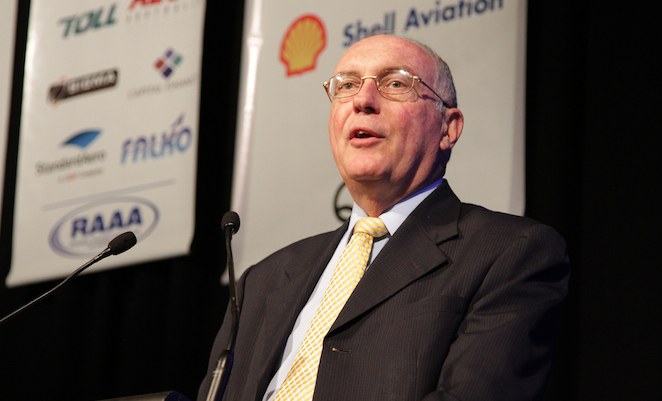
The federal government has accepted all but five of the 37 recommendations from the Aviation Safety Regulatory Review (ASRR) and called for Australia’s aviation regulators to work more closely together and improve their relationship with industry.
Deputy Prime Minister and Minister for Infrastructure and Regional Development Warren Truss says the ASRR report, which was written by former Airservices chairman David Forsyth and published in June, backs up Australia’s advanced aviation regulatory system as one of the safest public transport systems in the world.
However, there is a need for the industry to “embrace continuous improvement in our aviation safety regulatory system to capture the growing diversity of aviation” in Australia.
“Active engagement between industry and aviation agencies will help inform future regulatory priorities and the development of simpler regulations, standards and orders,” Truss said in a statement on Wednesday.
“Successful implementation of the Australian government’s response to the report will require our civil and military aviation agencies to work closely together, as well as the active and constructive participation of both the aviation industry and aviation agencies.
“Information sharing between industry and safety agencies must be based on a strong ‘just culture’ approach to assist in preventing future safety events and reflect international best practice.”
As part of its response to the ASRR, the government said it would issue a new Statement of Expectations to the Civil Aviation Safety Authority (CASA) board, which has been expanded to seven members following the appointment of Anita Taylor, Ian Smith and Murray Warfield on Wednesday.
The expanded board would play a critical role in the oversight and monitoring of how the agreed recommendations that directly and indirectly involve CASA would be implemented, the report said.
“While the government recognises that there will inevitably be some tension in the relationship between a regulator and industry participants, there is clearly capacity to significantly improve CASA’s engagement and relationships with industry in areas such as regulatory development and implementation,” the report said.
Meanwhile, the government said it was committed to the appointment of an additional Australian Transport Safety Bureau (ATSB) commissioner with aviation experience.
The ATSB and CASA were also expected to update their memorandum of understanding to work better together.
“The government also agrees in-principle to better information sharing between industry and safety agencies which is a well-established, international best practice and can assist in preventing future safety occurrences,” the report said.
“However, mindful of industry concerns in this area, the transition to a greater flow of information between industry, the ATSB and CASA must continue to be accompanied by CASA adhering to its sound policy declarations on exactly how aviation safety information will be used.”
Information sharing between the two regulators was highlighted as a significant issue in the ATSB’s report into the Pel-Air Westwind ditching off the coast of Norfolk Island in 2009.
The government did not agree with just one of the 37 recommendations, which proposed transferring the ATSB’s safety education function from to CASA.
“In reaching this position, the government notes both the ATSB and CASA have different, but complementary, safety education and awareness roles to play in Australia’s aviation industry and within the wider community,” the report said.
“Industry comments also raised concerns that the case was not sufficiently made in the report for this proposal to proceed.”
The government said four recommendations – delegating responsibility for day-to-day operational management of airspace from CASA to Airservices, that CASA change its organisational structure, that CASA establish small offices at specific industry centres, and changes to how Aviation Security Identification Cards are issued – would require further detailed examination by aviation agencies.
Truss said the appointments of Walker, Smith and Warfield, also announced on Wednesday, were consistent with recommendation six of the ASRR, which highlighted the need for the CASA board to have a range of appropriate skills and backgrounds.
The trio would “strengthen CASA’s vital role as the independent aviation safety regulator to the high standards expected by Australians”, Truss said.
Walker was the president of Gliding Federation of Australia, Smith was the Australian Maritime and Defence Foundation of Australia president and Warfield was a former member of the Royal Australian Air Force who also held senior executive and pilot roles at Qantas.
The full government response can be read here.















